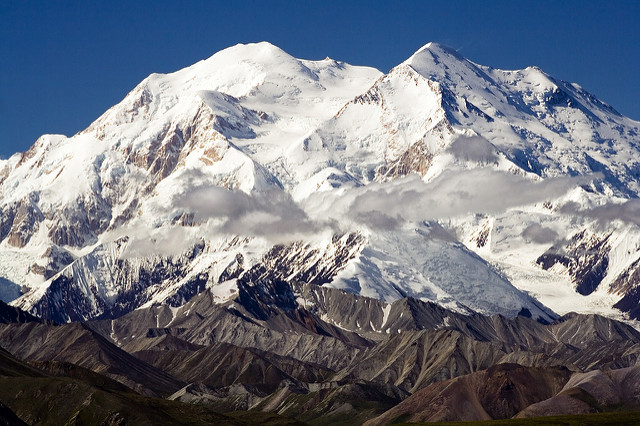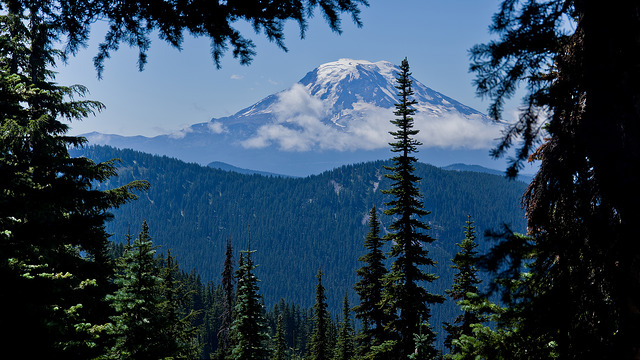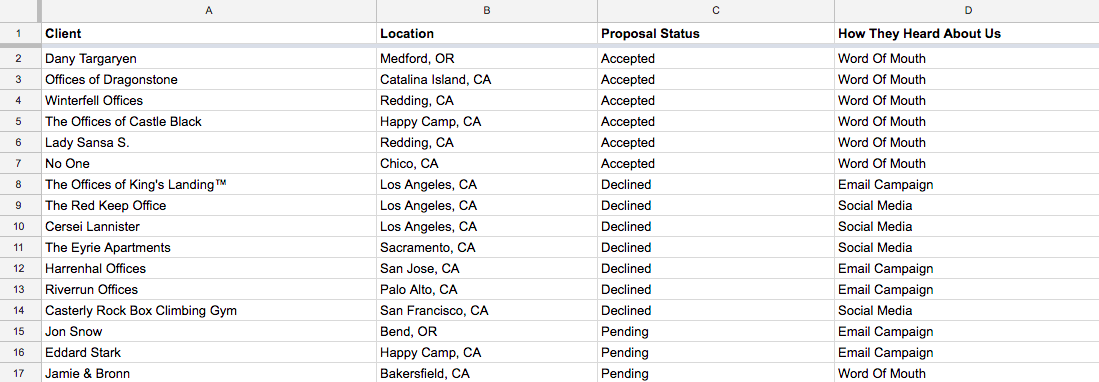Record-breakingly high mountain summits, which are the highest points of a mountain, are abundant in the United States — if you know where to look. In fact, the U.S. is home to over 200 mind-bogglingly high summits, including the highest in all of North America: Denali, located in Alaska. The locations — or should we say location — of the top ten highest summits may surprise you, as will the states with nearly identical massive summits that seem to be in really steep competition with each other.
View Highest U.S. Summits in a full screen map
To find out if the rest of the super-high mountain summits are condensed in a select few states or scattered across the country for all to see, check out the map above or read on.
To Summit Up Nicely: Ten Highest Summits
As we list off the ten very highest major summits in the U.S., you may start to see a pattern.
| Rank | Mountain Peak | Mountain Range | State | Elevation (feet) |
|---|---|---|---|---|
| 1 | Denali | Alaska Range | Alaska | 20,310 |
| 2 | Mount Saint Elias | Saint Elias Mountains | Alaska | 18,009 |
| 3 | Mount Foraker | Alaska Range | Alaska | 17,400 |
| 4 | Mount Bona | Saint Elias Mountains | Alaska | 16,550 |
| 5 | Mount Blackburn | Wrangell Mountains | Alaska | 16,390 |
| 6 | Mount Sanford | Wrangell Mountains | Alaska | 16,237 |
| 7 | Mount Fairweather | Saint Elias Mountains | Alaska | 15,325 |
| 8 | Mount Hubbard | Saint Elias Mountains | Alaska | 14,951 |
| 9 | Mount Bear | Saint Elias Mountains | Alaska | 14,831 |
| 10 | Mount Hunter | Alaska Range | Alaska | 14,573 |
That’s right, Alaska is home to every single one of the top ten highest summits in the U.S. Though the top ten all call The Last Frontier home, they are scattered throughout three different mountain ranges. The Alaska Range is home to 15 major summits in total. Three summits from the Alaska Range made the top ten list, including the very highest major summit not only in the U.S. but in all of North America: Denali.

While the Alaska Range deserves bragging rights for its monster of a mountain Denali, the Saint Elias Mountain Range is home to 24 insanely high summits. The second of the three mountain ranges to take up real estate in the top ten list, the Saint Elias Mountain Range has the most major summits of any mountain range across the U.S.
Topping off the top ten is the Wrangell Mountain Range, where two of the ten highest summits in the U.S. reside. The Wrangell Range also has five other summits which made it onto the map, though they weren’t tall enough to make it to the top ten list. In total, Alaska is home to 49 out of the 200 highest major summits in the U.S.
State by State Summits
Despite the top ten highest summits list being utterly dominated by Alaska, and Alaska having almost 25% of the country’s major summits, Alaska isn’t home to the most major summits. That would be Colorado. Colorado is home to 88 summits, which is nearly half — 44% — of all of the highest summits in the U.S. The highest summit in Colorado is Mount Elbert, which has an elevation of 14,400 feet and ranks #14. Although, if we stuck Mount Elbert side by side with Denali, which rises to 20,310 feet, Elbert would seem pretty puny, comparatively. Colorado’s highest summits range from Mount Elbert to the aptly named Little Cone, at 11,988 feet.
The home of the second-most major summits, of course, is Alaska, with 49 huge summits, or almost 25% of the map. Next up is California with its 22 high summits, the highest being Mount Whitney of the Sierra Nevada Mountain Range. Mount Whitney stands 14,505 feet tall and is the first non-Alaskan summit to appear on the list at #11. Wyoming closes out the double-digit states with 14 summits.
As for the single-digit summit states, you can visit eight major summits in New Mexico, while you’ll find five in Utah. Nevada is home to the smallest summit on the map, #200 or Charleston Peak (11,916 feet), and has three additional summits, whereas, in Montana, you can see three major summits. If you’re lucky enough to be near the Washington area, be sure to check out its two high summits as they tend to make a big splash. Washington’s Mount Rainier, which is 14,417 feet, is in the top 20 highest major summits in the U.S. Plus, the Evergreen State’s second summit, Mount Adams, is actually a volcano! It can be sighted when hiking the Pacific Crest Trail. Though Mount Adams hasn’t erupted in more than 1,000 years, it’s not considered extinct yet, so watch out if your bucket list consists of hiking all of the highest major summits in the United States.

Twin Towers: Summits with the Same Height
If you group the map by rank, you can see that several of the summits share the same rank. These twin towers have the exact same elevation, so they’re tied. Check out the eight highest summits in the U.S. with the same height:
- Wheeler Peak & Cloud Peak — #98
- Lone Cone & Castle Mountain — #132
- Hess Mountain & Mount Brooks — #193
- Lituya Mountain & Haydon Peak — #198
Wheeler Peak, located in the Taos Mountains of New Mexico, and Cloud Peak in the Bighorn Mountains of Wyoming are tied for the 98th highest summit in the United States. These two summits are both 13,167 feet tall. As for the second pair of peaks, Lone Cone is not so alone. Colorado’s smallest summit, located in the San Miguel Mountains, has the same elevation as Castle Mountain in Montana’s Absaroka Mountain Range. Both Lone Cone and Castle Mountain have elevations of 12,618 feet, putting both of them at #132.
The summit creators certainly struggled to make up their minds when creating Alaska’s Hess Mountain and Mount Brooks. These two Alaskan summits have an elevation of exactly 11,940 feet, are both located in the Alaska Mountain Range, and are both in 193rd place. Finally, Lituya Mountain and Haydon Peak — also both in Alaska and both in the Saint Elias Mountain Range — share the same 11,924 feet elevation, tying them for #198.
The sky is the limit for the highest major U.S. summits and for all of the maps you can make with BatchGeo. Make your own map of other U.S. landmarks you think are cool, or check out some “map-spiration” from maps like the landmarks and milestones along the Appalachian Trail, locations along Route 66 you can still find, or the world’s largest map of the world’s largest roadside attractions.





